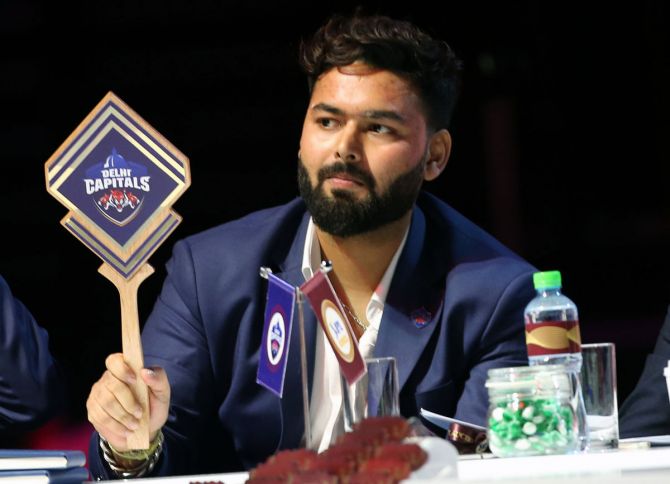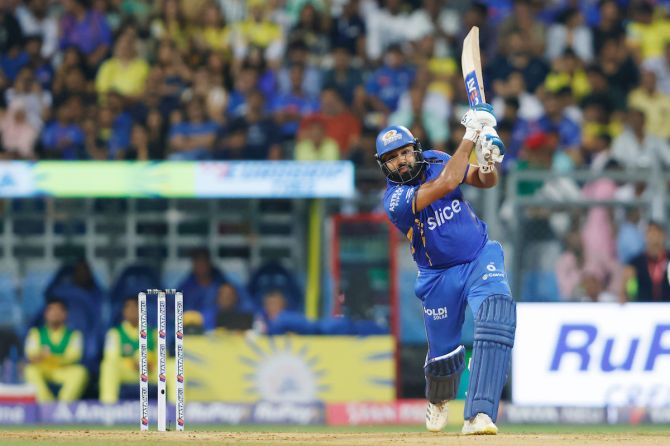The Indian Premier League governing council revealed changes ahead of the IPL mega auction, which is likely to be scheduled for November.
Here's all you need to know about the latest developments from the meeting held on Saturday, September 28.

HIKE IN PLAYER MATCH FEES

Board of Control for Cricket in India Secretary Jay A Shah announced a massive hike in match fees for IPL players starting from 2025.
Shah said that each franchise will allocate Rs 12.60 crore (about US$1 million) as match fees for IPL 2025.
'In a historic move to celebrate consistency and champion outstanding performances in the #IPL, we are thrilled to introduce a match fee of INR 7.5 lakhs per game for our cricketers! A cricketer playing all league matches in a season will get Rs. 1.05 crores in addition to his contracted amount. Each franchise will allocate INR 12.60 crores as match fees for the season! This is a new era for the #IPL and our players!' Shah posted on X.
A fixed salary purse of Rs 12.60 crore (Rs 126 million) in addition to the auction-cum-retention purse of Rs 120 crore (Rs 1.20 billion) will have to be kept by the franchises for IPL 2025.
Every cricketer in the IPL will now get Rs 750,000 per match and can earn up to Rs 1.05 crore (Rs 10.5 million) if he plays all the league matches in a season, which implies that teams will compensate players for their appearances throughout the season in addition to the amount stated in their contracts.
12 players named in the Playing XI for each match will receive this fee.
Players who would benefit most from this are lower paid players.
Those signed at or near their base price would see a significant boost in their earnings (Uncapped players with a base price of Rs 20 lakh (Rs 2 million) and capped players with a base price of Rs 50 lakh [Rs 5 million]).
Players who played many matches but were on lower contracts.
Emerging talents whose stature grew during the season but were retained at their original price.
The IPL governing council Player Regulations 2025-2027 stated: 'The total salary cap will now consist of auction purse, incremental performance pay and match fees.'
Previously, till 2024, the total salary cap (auction purse + incremental performance pay) was Rs 110 crores (Rs 1.10 billion) but the revised rules means the value of the salary cap will go up to Rs 146 crores/Rs 1.46 billion (2025), Rs 151 crores/Rs 1.51 billion (2026) and Rs 157 crores/Rs 1.57 billion (2027).
RETENTITIONS AND RTM

The 10 IPL franchises will be allowed to retain a maximum of six players from their previous squads, including one Right To Match (RTM) card.
Teams were allowed up to four retentions in the last mega auction held in 2022.
'The six retentions/RTMs can have a maximum of five capped players (Indian and overseas) and a maximum of two uncapped [Indians] players,' the IPL stated.
In case a franchise wants to retain five capped players, the following amounts will be deducted from the purse:
For the first three retentions: Rs 18 crore (Rs 180 million), Rs 14 crore (Rs 140 million) and Rs 11 crore (Rs 110 million).
For the next two: Rs 18 crore (Rs 180 million) and Rs 14 crore (Rs 140 million).
Each uncapped player retained will be valued at Rs 4 crores (Rs 40 million) and this amount will be subtracted from the Rs 120 crore (Rs 1.2 billion).
The teams that retain five capped players and one uncapped player will have their purse size cut down by Rs 79 crore (Rs 790 million) and will go into the auction with just Rs 41 crore (Rs 410 million).
In case a team retains 6 players (5 capped and 1 uncapped): Suppose Royal Challengers Bengaluru retain Virat Kohli, Faf du Plessis, Glenn Maxwell, Cameron Green, Mitchell Starc and Mohammed Siraj including one uncapped player. In this case, the franchise will have exhausted Rs 79 crore before the auction begins, leaving RCB with only Rs 41 crore for the auction, with no Right to Match card available.
If a franchise retains four capped and two uncapped players, it will lose Rs 65 crore (Rs 650 million) from its purse.
Say Rajasthan Royals retain Sanju Samson, Jos Buttler, Yashasvi Jaiswal, Yuzvendra Chahal and one uncapped player, then Rajasthan will have spent Rs 65 crore (Rs 650 million) before the auction. Here, the team has the option to use one Right to Match card to secure a player who represented the team in IPL 2024.
However, a franchise will not be able to use the RTM card at the mega auction if they retain 6 players.
New Clause For Use Of RTM Card

The RTM card carries a rider at this year's mega auction.
At the past auction, when the original team of a player played the RTM it was at the end of the bidding process and the team could just retain their player at that bidding price.
Now, the bidding team is allowed one more bid and that bid could go higher and higher.
For example, if the bidding closes at Rs 6 crore (Rs 60 million) for Rohit Sharma, and the home team (in this case Mumbai Indians) plays the RTM for him, the bidding team could put a final bid of even Rs say 10 crore (Rs 100 million), if they thought the player was worth it and MI would have to match that closing bid to retain Rohit's services.
This could practically nullify the advantage of holding an RTM card. And, while it will change the dynamics of the auctions, it can also put a spoke in the wheels for the franchise that wish to retain their player.
THALA DHONI'S UNENDING CSK BOND

The IPL has brought back a rule that was started at inception in 2008 but scrapped in 2021 and that will sound like music to ears of CSK fans.
The rule allowed Indian players who had retired from international cricket at least five years before the relevant season to go into the auction as uncapped players.
'A capped Indian player will become uncapped if he has, in the five calendar years preceding the year in which the relevant season is held, not played in the starting XI in international cricket and does not have a central contract with BCCI. This will be applicable for Indian players only, the BCCI stated.
This is a win-win for CSK who, if they want to, can retain franchise legend and former captain Mahendra Singh Dhoni for a mere Rs 4 crore (Rs 40 million), because he will be considered an uncapped player.
INDIAN PLAYERS PREFERENCE OVER FOREIGN PLAYERS

Among other changes in the by-law for the auctions is the cap on salaries for overseas players will be equal to the maximum that an Indian player earns.
If the highest bid for an Indian player at the upcoming auction is Rs 16 crore (Rs 160 million), then no foreign player can receive more than Rs 16 crore at the 2026 auction.
Similarly, if any Indian goes for over Rs 18 crore (Rs 180 million) at this year's auction, the maximum a foreign player can get in the next auction is Rs 18 crore.
If the most expensive Indian player in the auction is sold for Rs 25 crore (Rs 250 million), an overseas players can still be sold for more.
However, if an overseas player earns Rs 26 crore (Rs 260 million), they will only receive 18 crore, while Rs 8 crore (Rs 80 million) will be reverted to the BCCI for player development and welfare and will NOT go back to the franchise's kitty.
Among other new changes regarding overseas players is to be eligible for the 2026 mini auction, it is mandatory that they be part of the 2025 IPL auction.
TWO-YEAR BANS FOR NON-COMMITMENT
The BCCI has introduced a new rule imposing a two-year ban on players who declare their unavailability after being picked at the auction.
The implementation of this rule aims to address concerns about players withdrawing from the tournament after the auction, which often leaves teams scrambling to find suitable replacements.
INJURY REPLACEMENTS AND PLAYER LOANS
Till IPL 2024, franchises had to seek a replacement for an injured player before their seventh match of the season. From IPL 2025, teams can seek replacements till up to the 12th match in the league phase.
The IPL has also decided to 'reinstate' the player loan process, which can only be activated during the season. However, the rule has never been used to date.












 © 2025
© 2025